Agrosoyuz: Profits of 20% by 2011
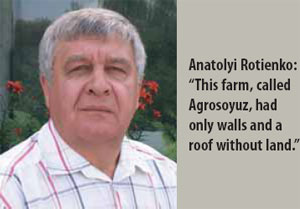
Many investments are being done in the area around Smolensk, Russia. Most of these concern dairy production, but a number has also started up with pig production. This is a portrait of a pig investor who started his business in 2008.
By Philippe Caldier
Coming from Belarus, Anatolyi Rotienko made his first steps to Russia in 2000 and worked on a 60,000 ha poultry farm in Koursk Oblast, located in the south west of Russia, near the Ukrainian border. He stayed active in Russia; ever since 2003, he has sold raw materials and feed, which are imported from Ukraine. “The Ukrainian sunflower seed cake had a higher quality than the Russian one,” says Rotienko.
| Smolensk Oblast: An agricultural region Located eight hours by train from Moscow, and a two hour drive from Minsk, Belarus, Smolensk Oblast (or province) has 1 million inhabitants on 49,800 km2. The province is strongly focused on agriculture, in which livestock has a major place as the sector represents more than 80% of the total agricultural production. Dairy is leading, with 300,000 tonnes of milk produced in the eleven first months of 2009. Smolensk Oblast counts just under 100,000 pigs. Some other pig investments similar to Agrosoyuz are being carried out by companies like Smolmiasa and Kaidakovskyi. |
In 2006, he bought an old pig farm in Smolensk Oblast, close to the border of Belarus (see Box). “This farm, called Agrosoyuz, had only walls and a roof without land,” says Rotienko, who now is director of the farm. He has started up the rebuilding and will invest 60 million roubles (€1.5 million) within two years to continue this process. Of this total, 40 million roubles (€1 million) came from the national programme of development of agriculture, aimed at boosting investments in Russian agriculture. In 2008, 650 breeding animals (Landrace, Duroc and Yorkshire) were bought in Russia to start the pig production. Today, the pig farm counts 850 sows in ten buildings, with a capacity of 12,000 slaughter pigs sold per year. In total, 28 people are employed on the farm. When all buildings are rebuilt, the capacity of the farm will triple to reach 36,000 pigs/ year. The slaughter pigs are killed at 100 kg liveweight and their price depends on their quality. “The price increased from 62 roubles/kg (€1.60/kg) liveweight in 2009 to 78 roubles/kg (€2/kg) today,” says Rotienko. He complains about the high level of pork imports coming mainly from Poland, but also from Argentina or Brazil. The technical results of this pig unit are very good, with 25 piglets weaned/sow/year and a feed unit built on-farm, producing 5 tonnes feed/ day. “Feed represents 70% of our production costs, around 3.5 million roubles (€90,000) per month,” he adds. The future of his business is bright, Rotienko says. “The profitability is around 8-10% in 2010, a little more than in 2009, and we plan to reach 20% within one year,” he says. Investments do not stop either when having reached the 20%. Rotienko plans to invest in a processing unit next year to bring more added value to his pigs. He says, “I did not see the crisis.”
| Price increases due to drought Elena Kosheva, general director of Rossovit, a major Russian premix and concentrate producer belonging to the French InVivo NSA, gives a good overview on the consequences of the drought of this summer. She said the emergency mode was announced in 32 Russian regions in early August because of fires – and it was later that month before normal life returned. According to the Russian Ministry of Agriculture, this year’s grain harvest is much lower than that from 2009; and autumn sowing is delayed. The export of cereals was temporarily stopped from 15 August, by the order of Russian prime minister Vladimir Putin. There was a deficit of every kind of cereal on the market and from the beginning of August prices for cereals increased twofold. On average, the price for forage barley went up to 6,000 roubles (€150) per tonne, forage wheat price reached 6,500-7,000 roubles (€163-175) per tonne. The milling wheat was purchased at the price of 8,000 roubles (€200) per tonne. Prices for complete feed increased by more than 15%, prices for pork in liveweight increased by 14% and its deficit was noted in free trade. The situation with poultry meat, milk and eggs was not dangerous and there was no deficit for these products. The economic situation had an impact on Rossovit’s business, as 30% of its sales are for pigs. All types of raw materials were sold at higher prices because of cereal deficits. The company’s expenses grew and it had to reconsider its agreements with clients and pay more attention to their paying abilities. The main task for our consumers is to make stocks of cereals and keep the prices for feed, to avoid a reduction of the herd size. |
 Beheer
Beheer

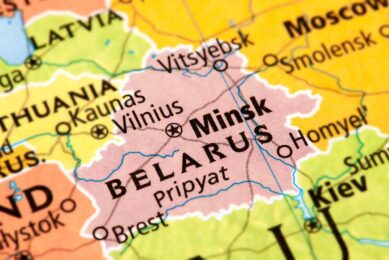
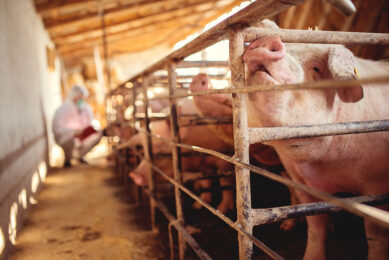
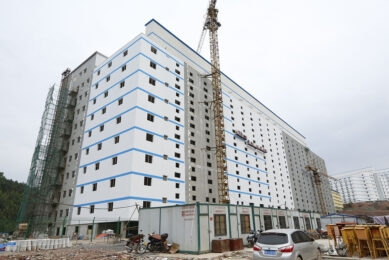
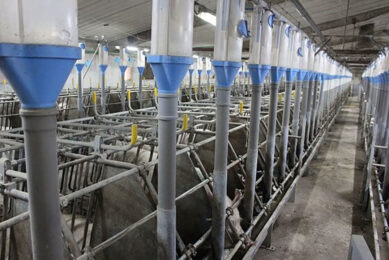



 WP Admin
WP Admin  Bewerk bericht
Bewerk bericht